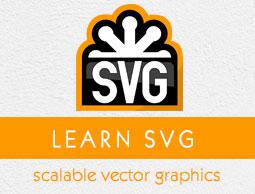SVG - Patterns
SVG uses <pattern> element to define patterns. Patterns are defined using <pattern> element and are used to fill graphics elements in tiled fashion.
Declaration
Following is the syntax declaration of <pattern> element. We've shown main attributes only.
<pattern
patternUnits="units to define x,y, width and height attributes."
patternContentUnits ="units to define co-ordinate system of contents of pattern"
patternTransform = "definition of an additional transformation from the pattern coordinate system onto the target coordinate system"
x="x-axis co-ordinate"
y="y-axis co-ordinate"
width="length"
height="length"
preserveAspectRatio="to preserve width/height ratio of original content"
xlink:href="reference to another pattern" >
</pattern>
Attributes
| Sr.No. |
Name & Description |
| 1 |
patternUnits − units to define patterns effect region. It specifies the coordinate system for the various length values within the pattern and for the attributes defining the pattern subregion. If patternUnits="userSpaceOnUse", values represent values in the current user coordinate system in place at the time when the 'pattern' element is used. If patternUnits="objectBoundingBox", values represent values in fractions or percentages of the bounding box on the referencing element in place at the time when the 'pattern' element is used. Default is userSpaceOnUse. |
| 2 |
patternContentUnits − units to define pattern content region. It specifies the coordinate system for the various length values within the pattern and for the attributes defining the pattern subregion. If patternContentUnits="userSpaceOnUse", values represent values in the current user coordinate system in place at the time when the 'pattern' element is used. If patternContentUnits="objectBoundingBox", values represent values in fractions or percentages of the bounding box on the referencing element in place at the time when the 'pattern' element is used. Default is userSpaceOnUse. |
| 3 |
x − x-axis co-ordinate of the pattern bounding box. Defeault is 0. |
| 4 |
y − y-axis co-ordinate of the pattern bounding box. Default is 0. |
| 5 |
width − width of the pattern bounding box. Default is 0. |
| 6 |
height − height of the pattern bounding box. Default is 0. |
| 7 |
preserveAspectRatio - to preserve width/height ratio of original content. |
| 8 |
xlink:href − used to refer to another pattern. |
Example
testSVG.htm
<html>
<title>SVG Pattern</title>
<body>
<h1>Sample SVG Pattern</h1>
<svg width="800" height="800">
<defs>
<pattern id="pattern1" patternUnits="userSpaceOnUse"
x="0" y="0" width="100" height="100"
viewBox="0 0 4 4" >
<path d="M 0 0 L 3 0 L 1.5 3 z" fill="blue" stroke="green" />
</pattern>
</defs>
<g>
<text x="30" y="50" >Using Pattern (Triangles): </text>
<rect x="100" y="100" width="300" height="300" stroke="green"
stroke-width="3" fill="url(#pattern1)" />
</g>
</svg>
</body>
</html>
One <pattern> element defined as pattern1.
In pattern, a viewbox is defined and a path which is to be used as pattern is defined.
in rect element, in fill attribute, url of the pattern is specified to fill the rectangle with pattern created earlier.
Output
Open textSVG.htm in Chrome web browser. You can use Chrome/Firefox/Opera to view SVG image directly without any plugin. Internet Explorer 9 and higher also supports SVG image rendering.


